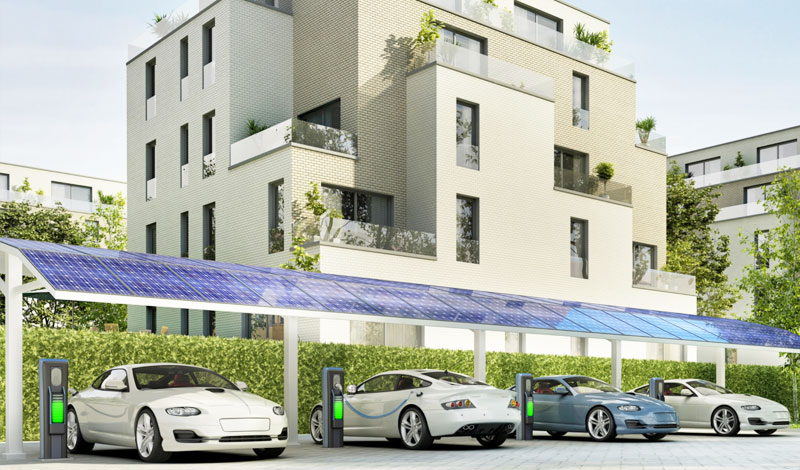Electric vehicles (EVs) are becoming more popular with American consumers. The lane formerly dominated by hybrids is getting crowded as manufacturers rush to get zero or low emissions vehicles on the market. Even Detroit’s big three automakers, long a symbol of big cars with big engines, are getting into the EV game. General Motors has pledged to exclusively produce electric passenger vehicles by 2035, while Ford is launching its electric pickup truck in the next few years.
About 80% of all EV charging is done at home, and it tends to be an easy operation for single-family homeowners. They just pull into the garage and plug in. By the morning, they have a full battery and are ready for the day’s commute. Apartment dwellers and residents of other multifamily complexes, such as townhomes and condos, don’t have it quite so easy if their parking space isn’t EV ready.
Benefits of EV charging for multifamily buildings
Catering to EV drivers provides many benefits to multifamily property owners. Installing charging stations on your property helps you attract residents and reduce your vacancy rate. EV owners tend to be financially stable, and in their prime earning years. These folks will move (or stay) based on the availability of modern amenities like EV charging stations.
Charging stations can also provide additional revenue, as you can increase rent to cover the costs of this premium convenience. You can also bill residents either a flat-rate monthly fee or per kWh of use. To help you recover the costs of installation even more quickly, you can apply for incentives or rebates your state may offer. To save time, make sure your charging infrastructure partner offers a software platform that automates the billing the process.
Another benefit to providing EV charging stations is that you can position your complex as a forward-thinking market leader. LMC, one of the largest US apartment developers, recently installed EV chargers at their premium complex in Bloomington, Minnesota. The green amenity was so well received that they’re installing charging points at their other complexes in the area.
Selecting the right charging stations for your building
When selecting your charging infrastructure, you’ll need to balance speed, energy efficiency and compatibility. There are three types of chargers:
- Level 1: Plug your car into the charger, which in turn is plugged into any 120-volt outlet. Level 1 requires 20 plus hours for vehicles to achieve a full charge and is not recommended for MDUs.
- Level 2: These are the most common type of public chargers and are often used for home charging. They require a 240-volt outlet and must be installed by an electrician, but they charge vehicles three to seven times faster than a Level 1. They’re also more energy efficient, and a great choice for multifamily buildings.
- Level 3 or DC Fast Charger. As the name implies, vehicle charging time is greatly reduced — it’s almost as quick as filling the tank of a gasoline vehicle. Not all EVs can use fast chargers, so while one or two may be a nice addition to your complex, they should not be the only type of charger you install.
Powering your properties with EV charging is a great way to help them stand out in a competitive market.
